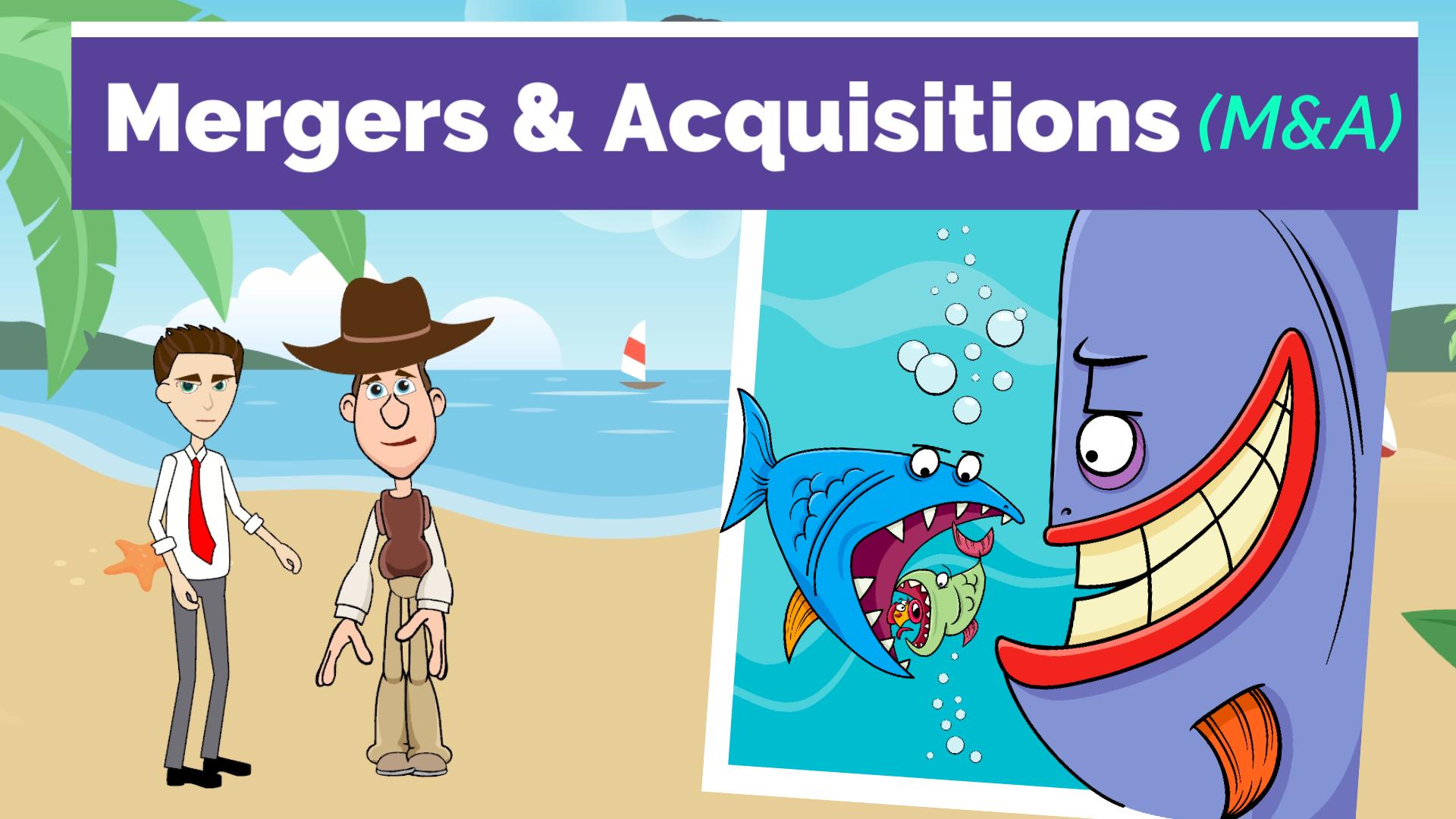Introduction to Mergers and Acquisitions for Kids and Teens
This video explains the concept of mergers and acquisitions in a simple, concise way for kids and beginners. It could be used by kids & teens to learn about M&A, or used as a money & personal finance resource by parents and teachers as part of a Financial Literacy course or K-12 curriculum.

Suitable for students from grade levels:
- Kindergarten
- Elementary School
- Middle School
- High School
The topics covered are:
- What are mergers and acquisitions
- Why would a company go for a merger or acquisition
- How does a merger or acquisition affect shareholders
- Are there different types of mergers and acquisitions
What are mergers and acquisitions?
Mergers and acquisitions (commonly called M&A) is a term that is used when talking about the consolidation of two companies.

The two words are often used interchangeably, but have different meanings.
In a merger, two companies that are of similar sizes combine to create one new legal entity. Acquisitions are where a larger company (the acquirer) takes control of a smaller company (the target), thereby assuming ownership of its business.
Another distinction is based on the nature of the deal. If it is friendly, it’s often called a merger – if it’s hostile, it’s definitely an acquisition.
Why would a company go for a merger or acquisition?
A business can grow in size and increase profits organically by investing in new projects. But a faster way could be to grow inorganically through mergers and acquisitions.
Acquisitions are also often a means to kill competition, procure new technology or talent, quickly gain technical expertise saving years of R&D costs, accelerate time to market, expand to new geographies, and increase market share.
For instance, Facebook’s 2012 acquisition of Instagram helped secure its dominance in social media.
Mergers are a great way to create synergies where the whole is more than the sum of the parts. This is achieved by increasing efficiency, streamlining operations, and reducing costs & overheads through economies of scale.
An example is the combination of Exxon and Mobil, the top 2 leading US oil production companies, to create one single entity Exxon Mobil, which helped it achieve these synergies.
How does a merger or acquisition affect shareholders?
In most traditional M&A transactions, after approval from the target company’s Board of Directors, more than 50% of the shareholders need to vote in favor of the deal for it to go through.
As a purchase consideration, the buyer can use stock, cash or a combination of the two. If the buyer is issuing more than 20% in stock, their majority shareholders will also need to approve the deal.
Another way a buyer can take over a company is through a Tender Offer, where the acquirer offers to buy stock directly from the shareholders of the target at a premium, bypassing the target company’s management and the board.
The exact impact on shareholders may vary based on the terms of the deal. However, a merger or acquisition is usually viewed favorably by the stock market and press.
This is especially beneficial for the shareholders of the target company as its stock price usually goes up after the announcement.
However it’s important to note that many planned mergers or acquisitions don’t actually happen, which can impact the shareholders negatively.
Are there different types of mergers and acquisitions?
Yes.
Horizontal mergers are when two companies in the same industry merge. For example, 2 car manufacturers merging to create a bigger, better brand.

Vertical mergers happen within a supply chain, when a company merges with its customer or supplier. For example, a smartphone company merging with a chip maker.
Conglomeration is when two companies that have nothing in common merge – this can be done for diversification. For example, a pharmaceutical company merging with a supermarket chain.
Congeneric mergers are between two businesses that focus on the same consumers but in different ways.
The products of the two complement each other – for instance, a video game company merging with a gaming chair manufacturer.
Download Transcript: Ideal for Use by Teachers in their Lesson Plan to Teach Kids & Teens

